Ceasefire with an insurgent outfit is expected to adopt a progression of steps which would lead to a comprehensive resolution of conflict. Indeed, the path, which a peace process normally takes after a ceasefire is entered into, is expected to be less cumbersome than the one that precedes a ceasefire. Whereas the dynamics that could witness the pre-ceasefire stage could be a long-drawn-out process, with protracted in camera confabulations, engagement of intermediaries etc, a properly managed post-ceasefire situation should ideally result in early resolution. Prolongation of a post-ceasefire period (prior to resolution) should be unnecessary, as much of the groundwork on which a future resolution would be structured on should have already been established preceding a formal cessation of hostility. However, in the context of North East India, the conflict resolution scenario has become increasingly mired in delays and hindrances, and it appears that adequate attention has not been paid to the pre-ceasefire stage.
But it is must also be noted that the fairness of India’s systemic scale has witnessed the ability to accommodate intractable rebellions and secessionist movements into its fold through dialogue and negotiations. The noteworthy instance of such a resolution is the accord with Mizo National front (MNF) that was signed on 30 June 1986. MNF had waged a war of secession with the Indian state—receiving aid even from inimical countries like Pakistan. But the settlement saw not only the return of the militants to the mainstream, but also their participation in the Indian democratic process. Mizoram is not only an instance of successful conflict resolution, but is today one of the most peaceful states in India. The institutional sincerity and capacity of the Indian state to redress genuine grievance and accommodate rebellious groups cannot, therefore, be doubted.
But it is also true that the MNF success has not quite been replicated in the case of other militant organisations in the region, the most conspicuous example being the case that of National Socialist Council of Nagaland (NSCN), one of the faction of which, NSCN-IM (Isak Muviah) completed its 14th year of ceasefire without resolution on 1 August 2011. Indeed, recent reports have stated that the latest parley between NSCN (IM) and the government has once again come up against the wall, with the government rejecting the Naga group’s demand for integration of Naga-inhabited areas into a Greater Nagalim. Furthermore, NSCN (IM) has coined a new term “shared sovereignty,” a concept—although not clearly spelt out—could entail the nuances of the quasi-federal nature that already characterises India’s system of governance. At any rate, a deal with the insurgent group would have to await a further passage of time.
But to return to the question of ceasefire in the larger context, it would be noted that cessation of hostilities with militant groups in North East India (in the post-MNF era), and the long-drawn-out negotiations that seem to invariably follow such ceasefires—without institution of full-bodied resolutions—are giving rise to questions not only about the efficacy of the strategy that is being adopted for the purpose, but a slew of conflict related apprehensions have also surfaced. Such concerns range from risks of revocation of ceasefires, to factional clashes and violation of ceasefire rules.
Also, prescription for early resolution may not acquire a translation on ground for a variety of reasons, the most important of which is the inability of both the parties to arrive at a common ground, the presence of spoilers and, the reluctance of militant organisations to “give-up” certain conditions, which it would perforce have to were a process of dialogue to even begin. By way of an instance for the third reason, the obstinacy of a militant organisation such as anti-talk ULFA in its continued demand to discuss “sovereignty” has not only the possibility of derailing the dialogue process that is expected to begin with the organisation’s pro-talk faction, but also turn out to be a piecemeal affair, especially as the faction that holds the guns have not been included in the process. It is the author’s opinion that the driving force that propels the Paresh Baruah faction of ULFA to demand a “discussion on sovereignty” could be the ISI’s plan to create a legal precedence for Kashmir. Indeed, the critical actor in the drama is Kashmir, where the real battle is being waged. After all neither NSCN nor National Democratic Front of Bodoland (NDFB) have given up on its demands for “sovereignty,” but that had not prevented either of the organisations from entering into a ceasefire agreements. The State must take note of this important aspect in ULFA behaviour.
Moreover, if the policy that is being sought to be espoused regarding militancy in the region is to carry out repeated ceasefires without due process, create designated camps and wait for a time when the cadres “billeted” in such camps will peacefully disperse, then it must be rethought. The danger of establishing back-to-back designated camps across the North East, from Kokrajhar in Assam to Moreh in Manipur, could well witness the emergence of a “coalition of the willing,” and a coordinated anti-India exercise from within the region. In fact, the embittered militant groups (ceasefire instituted or non-instituted) in the region could, regardless of their intrinsic differences, manufacture an identity around the animosity they have against New Delhi. Prolongation of ceasefires—as has been seen in the case of NSCN-IM—is leading militant groups to engineer cross-organisational linkages, and if the common denominator continues to be anti-India, then such a coalition is a matter of time. This would be a particularly undemanding affair given that forces such as the ISI are all set to aid the agenda.
Furthermore, there is a grave danger of anti-India forces utilising insurgent groups that have entered into ceasefire to perpetrate violence from within India, and for reasons that may have nothing to do with the outfit’s original agenda of secession etc. As was witnessed in the case of NDFB (a group that ceased hostilities), an important section of the organisation led by its erstwhile chairman triggered serial blasts all over Assam on 30 October 2008 for monetary considerations, and at the behest of the ISI-DGFI-ULFA combine and elements in the Bangladesh army. NDFB was able to achieve this by utilising the support system that was—to an extent—ascertained by some of the provisions on which the ceasefire was entered into. The hidden agenda that had characterised NDFB (after its ceasefire in 2004) must be taken into account when the state responds—this time around—to the offer of unilateral ceasefire (as, indeed, it has recently) by the anti-talk faction of NDFB.
Another aspect that necessitates a brief examination before the assessment of the ceasefire phenomenon in the North East is concluded is the incentive that a militant group receives when it ceases hostilities. The latest rehabilitation package, which came into force from 1 April 2005, provides for monthly stipends and a one-time grant in the end of a monitored three-year period for militants who surrender. However, nothing is provided to a militant group that comes over ground after instituting a ceasefire or, for the matter, for surrenderees of the pre 1 April 2005 period. This is strange. While the author is not recommending financial awards to groups for ceasing hostilities (it can take the dimension of an unworthy precedence), the fact of the matter is that problems such as extortion could perhaps be controlled to an extent if incentives are provided by way of some economic rehabilitation of such groups. After all, when a ceasefire takes place, it is normally the leadership that are benefited (Niranjan Hojai of DHD (J) never stayed in a designated camp after his well-publicised surrender in Haflong, but took to Nepal in order to carry on his life of luxury until NIA caught up with him)—the lower level cadres return without receiving anything, taking thereby to courses of action that are decidedly illegal. The possibility of providing every member of a ceasefire group some means of livelihood (some erstwhile members of the BLT were employed in various security set-ups) from the time he comes over ground must be considered. This is particularly important, as there is invariably a delay in resolution post-ceasefire. New Delhi can examine this aspect with some seriousness, especially in the light of the problems that have come to light regarding extortion, collection of taxes etc by groups ceasing hostilities.
It is also opined that surrenders (if properly managed) can be more fruitful as a security strategy than ceasefires, or even the policy that of “elimination” of a militant. The reason is quite simple. Cessation of hostilities (as has been seen above) is burdened with problems, the most irksome being the dilemma about what to provide a group that has ceased hostilities. After all the basis on which cessation of hostilities normally takes place is because of the expectation that “giving up arms” would entail the fulfilment of demands that years of militancy and violence have not achieved. Indeed, there is no precedence whereby a group ceasing hostilities return to the mainstream without exacting at least a part of its demands. Therefore, when a militant group like NDFB or Dima Halam Daogarh (DHD) returns to the mainstream, the State is faced with the predicament about what it can possibly offer the groups, leading to tactics of delay and such other unsavoury subterfuge. The case of NDFB has become even more complicated as Bodo Liberation Tigers (BLT) was given almost everything, leaving nothing for the day when NDFB would come over ground. It seems that there was a lack of perspective planning on the matter, and the only inspiration seems to have been to speedily institute a ceasefire, sweep much of the baggage that come with it under the carpet and wait for another generation to search for resolution.
On the other hand, in the case of elimination of militants by military means, the militant leadership’s loss is limited to two, but with an important gain. When the security forces kill a militant, the leader of the organisation loses a cadre, and possibly a weapon. But he gains a martyr, and the resolve among his cadres, the population and in his own self, for the cause and the movement that is being carried out is enhanced as a result. In the case of surrender, the militant leader’s loss is four-fold: 1) cadre 2) weapon and 3) credibility and 4) possible rehabilitation with the population that he hailed from. The surrender of a militant showcases the futility of the cause for which the group is waging war. The state must make optimal use of this stratagem. This is a device that the Indian state may wish to mull over.
In conclusion, it is reiterated that the auguries and caveats regarding cessation of hostilities must encompass unorthodox methodologies that can constitute newer ideation. But the most important aspect that must be borne in mind is that the North East is an integral part of not only physical India, but a component of its spiritual and emotional aspect as well. Long-term policies should, therefore, govern negotiations, ceasefires and resolutions with wayward groups in the region, shedding the imperative of short-term expedience.
-------------------------------------------
Published date : 2nd August, 2011


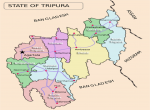

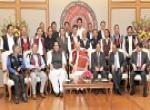
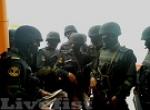
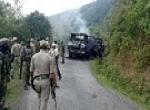
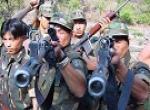
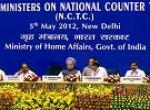
Post new comment